Sandy beaches and a lively buzz, Sicily
I spent September travelling around Sicily alone, mostly on foot, and I wanted to flop on a beach before going home. I settled on Cefalù on the north coast, because of its rare combination of sandy beach and medieval town – and it was love at first sight. I had heard that the tiny town gets unpleasantly packed in summer, but by late September there was just a lively buzz. Cefalù seemed a distillation of everywhere else I had been: Sicily in miniature. I gazed up at the mosaic-bright Christ Pantocrator in the twin-towered Arab-Norman cathedral. I came face to face with Antonello da Messina’s enigmatic Portrait of an Unknown Man, a masterpiece in the unassuming (and empty) Museo Mandralisca. I climbed La Rocca, a huge crag that looms over the town, to a fourth- or fifth-century temple and ruined castle.
I pottered around the cobbled streets, popping into ceramic shops and a gelateria; joined the passeggiata along the seafront at sunset; and idled in piazzas drinking Campari spritz and eating pasta con le sarde. In fact, it wasn’t until the last afternoon that I finally found time to laze on the beach.
Rachel Dixon
Bay-hopping in Croatia

Looking like a huge misshapen claw, Telašćica nature park dangles from the southern end of the Croatian island of Dugi Otok, near the islands of Kornati national park. But while the Kornatis are scrubby barren dots of sheep-covered land, most of Telašćica is lusciously green – all the better to show off its contrast with the vivid blue of the Adriatic. Within this strange claw are 25 bays and six islets surrounded by olive groves, vineyards and forested hills heavy with the scent of pine. I followed a road up to a viewpoint in an old Habsburg fort, from which I could see glistening pools of the Adriatic flowing between green mounds, and moored sailing boats. Nearby is Mir, a saltwater lake skirted by limestone cliffs. It’s a popular swimming spot for day-trippers from Zadar, so I headed instead to Jaz bay for a swim off the pebbly shore. Here I found the peace that was lacking in Mir, which, ironically, translates as peace. Luckily, here at Telašćica, there’s plenty of that to go round.
Mary Novakovich
Rousseau’s romantic retreat
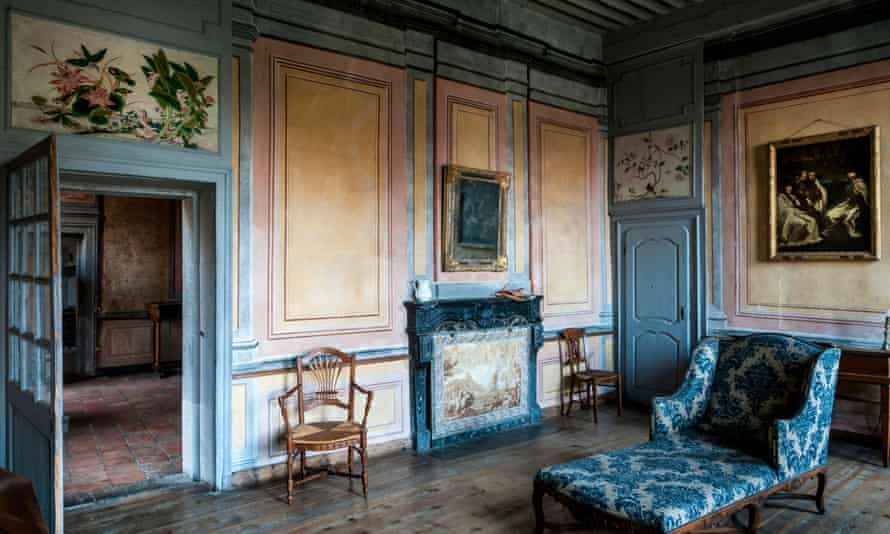
When an unexpected cold snap descended on Lac Annecy and forced us off the pedalo, we headed into nearby Chambery for a hot chocolate – and discovered the signs for Les Charmettes, the museum and former home of philosopher Jean-Jacques Rousseau. A teenage Rousseau met Madame de Warens, 13 years his senior, in 1728. He called her “maman” and they moved into Les Charmettes farmhouse together in 1736. With no guards or velvet ropes, visitors are free to wander around Rousseau’s bedroom and Madame’s more romantic quarters (with hand-painted wallpaper). Downstairs, there’s a clavichord, a chaise longue and a table set for lunch à deux. Rousseau wrote that in the five years he spent there, he “enjoyed a century of life and total and complete happiness.”
He passed the time devising a numerical form of music notation, hiking in the Chartreuse mountains and advancing his philosophical “storehouse of ideas”. The gardens include rare vines, beehives and an orchard with views that have barely changed since Rousseau gazed across the valley. His philosophy influenced the French Revolution and Charmettes became a place of pilgrimage after his death.
Jon Bryant
The world’s longest wooden staircase, Norway
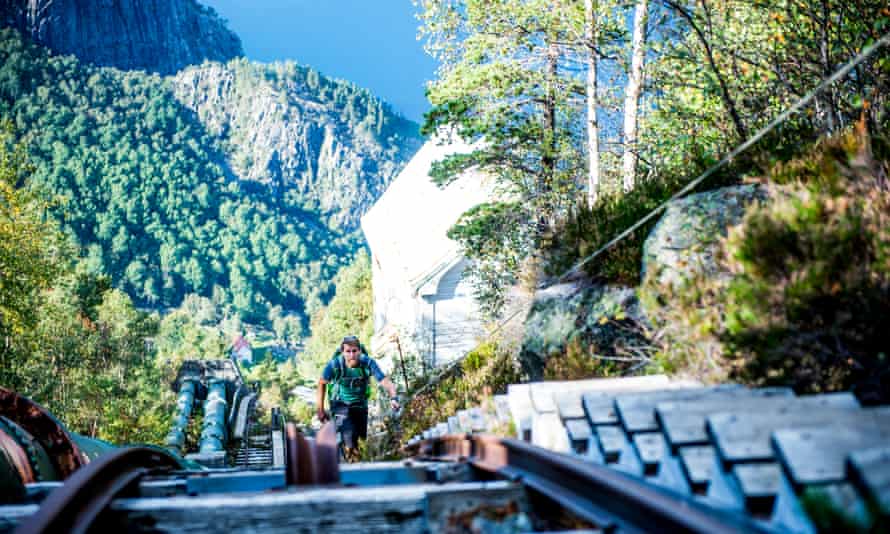
Spending my summers growing up in Glencoe means I’m constantly carrying the emotional impact of its serene mountains and lochs at the back of my mind. Which is to say that when I’m travelling I’m always assessing nature’s most awe-inspiring sights in comparison, even if that often ends in disappointment. So the first thing that struck me while climbing to the top of the world’s longest wooden staircase, all 4,444 steep steps above the roadless village of Flørli in south-west Norway, was how empty it was. Barring a handful of hikers from Stavanger behind me, I was alone and that was slightly unnerving, if thrillingly welcome in late summer. It was almost unreal.
The second thing I’ll never forget was the heart-in-mouth panorama at the top. From the Ternevass dam, the deep-blue Lysefjord and the mammoth cliffs of Preikestolen across its sun-brushed surface jostled for my attention. The landscape was naked and almost Caledonian, and yet it was a Norwegian wilderness to dream on.
So, in a salute to my temporary hosts, I indulged in friluftsliv, the Nordic idea of open-air living and outdoor adventure, and came back for more the next day.
Mike MacEacheran
Wine from Flanders? I nearly spilt my beer
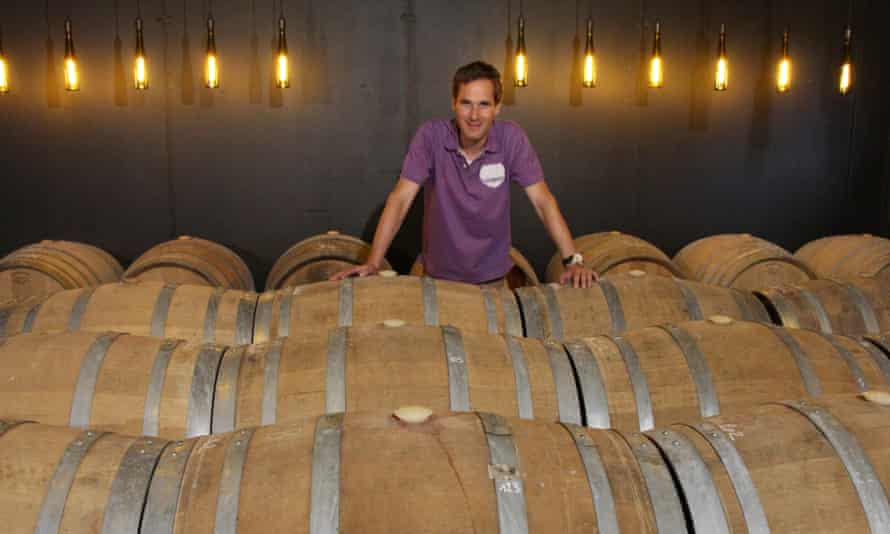
French people tend to give you a strange look when you talk about wine from Belgium, a country more readily associated with beer, mussels and frites. But my eyes were opened during a vineyard and foodie tour of the bucolic corner of west Flanders known as Heuvelland, the Hilly Land, not far from the sombre war memorials of Ypres.
It is a surprise to discover these hills covered with vines and young, dynamic vignerons opening their cellars for tastings of wines whose quality really impresses visitors. Martin Bacquaert makes some outstanding sparkling vintages at Entre-deux-Monts, following the classic méthode traditionelle made famous by champagne makers.
Over at Monteberg, wine lovers can sit out at a panoramic terrace, feasting on cheese, charcuterie and fruit from an organic farm while sipping bubbly, a fruity red or trying artisanal gin. Heuvelland’s tourism office excels at recommending visits. A romantic spot to stay is B&B De Rentmeesterhoeve, an ancient manor house surrounded by a moat and gardens.
John Brunton
Rambling to Portugal’s mountain villages
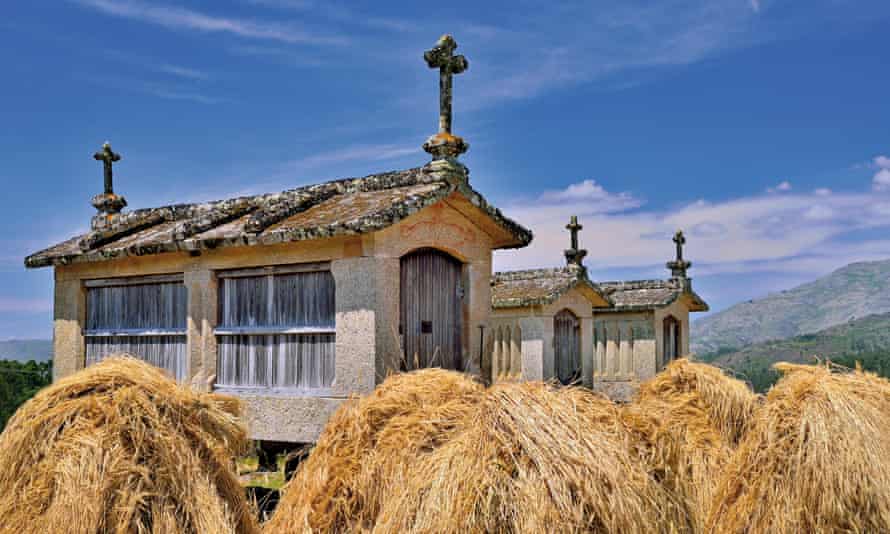
My visit to Peneda-Gerês, Portugal’s only national park, had been a long time coming, Covid-postponed from spring 2020. But finally, in late August, I found myself rambling around its granite massifs, along shepherd tracks and pilgrim trails – and into Soajo. This little mountain village is one of Peneda-Geres’s most traditional, with tight-knit alleys, an ancient pillory (carved, usually, with a smiley face) and an abundance of espigueiros, the region’s typical stilted, stone granaries. I stayed at Casa do Eiró, an old house by the main square. It has been in owner Rosa Rocha’s family for generations; her photos and knick-knacks are still scattered inside. Each morning Rosa brought a breakfast basket, with fresh bread from Soajo’s bakery and peaches from her garden. In the evenings I ate at restaurant Saber ao Borralho where Rosa – also owner-chef here – cooked up huge portions of carne de cachena (local beef) and fig cheesecake.
Sarah Baxter
Mosques, minarets and moreish food, Istanbul
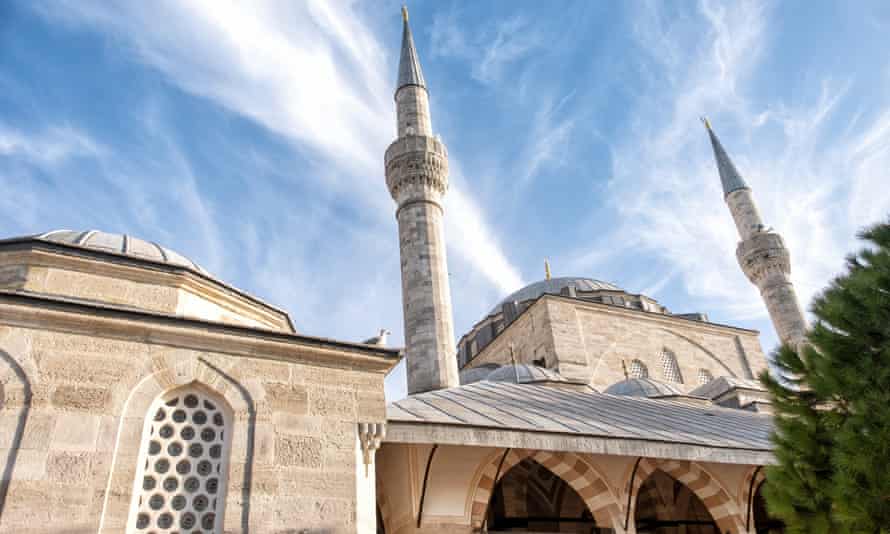
“As I was going to Üsküdar,” sang Eartha Kitt in the 1950s in her fabulous rendition of the Turkish song Kâtibim. Üsküdar, a neighbourhood on the Asian side of Istanbul, had somehow passed me by … but now I had Eartha’s voice in my head as I boarded the ferry for the short scenic trip from Karaköy on the European side. Two things drew me there: a particular lokanta (restaurant) and a famous waterside mosque. The chestnut pilav and dolma at Kanaat Lokantası, set up by the Kargılı family in 1933, was as good as I’d been told by friends, the setting distinctly old fashioned, the food moreish and rich. Then a five-minute walk back towards the ferry dock took me to Mihrimah Sultan mosque), built in 1548 for the daughter of Süleyman the Magnificent. Strikingly beautiful with its slender minarets and stained-glass windows, it is but one of Üsküdar’s many historic mosques, giving reason to return.
Caroline Eden
The ‘improbably pretty’ Welsh Marches
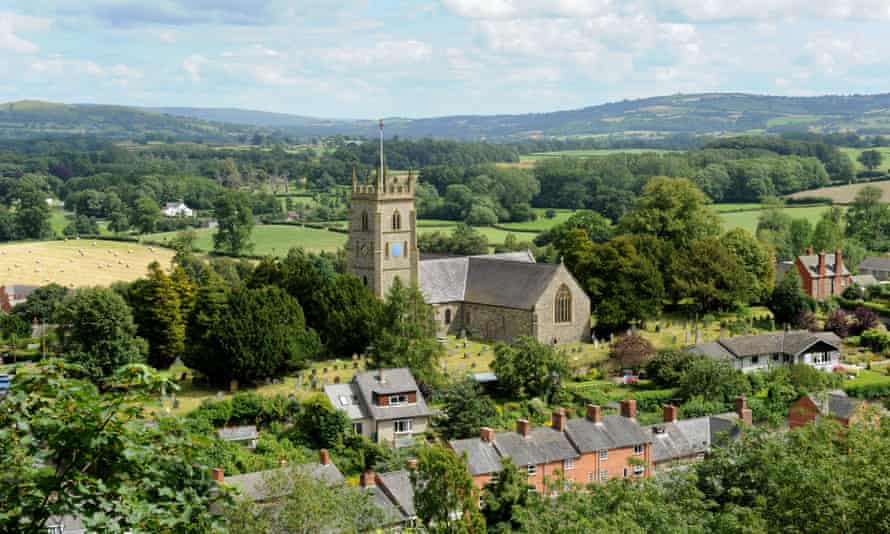
It was while reading Jan Morris’s book, Wales: Epic Views of a Small Country, during lockdown that it dawned on me how little of this “damp, demanding and obsessively interesting country” I had visited. Previous trips had traced the usual tourist routes from Cardiff’s Millennium stadium and the beaches of Pembrokeshire to Snowdonia.
My post-lockdown resolution was to explore a part of the country that often gets bypassed – the drive-through borderlands of mid-Wales. The first surprise was that we arrived in the middle of a heatwave. The second came when we climbed up to the ruins of the Norman castle in Montgomery and took in the view. It was expansive, filmic even: an improbably pretty scene with the church tower of the little town in the foreground, and the green pastures of Powys and Shropshire running out to Corndon Hill in the distance.
Another line from Morris came back to me: “To look at, the nature of Wales is deceptive. Within its small expanse the style of terrain changes so often, the mountainous countryside is so constantly corrugated, this way and that … the scene in short is so cunningly variegated.”
Andy Pietrasik
A navy lark in Puglia, Italy
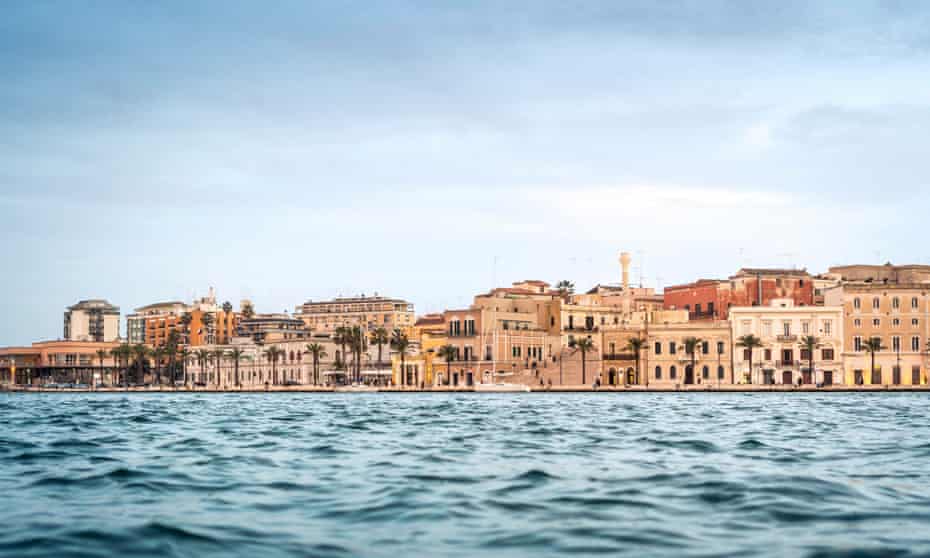
The port city of Brindisi has never bothered much with tourists. In its 2,600 years of history, the doings of soldiers, seafarers and traders in its huge natural harbour were far more important. While in the past decade it has added a smart seafront promenade lined with restaurants, bars and gelaterias, its old town, with all the windy stone streets and churches you’d expect, still sees little in the way of crowds. The archaeological museum next to the cathedral is even free to enter. Its collection of ancient Greek vases and lovely Roman mosaics rivals those in Naples and Sicily, yet we had it to ourselves on a sunny autumn afternoon. The imposing 13th-century castle is not open to the public because – imagine! – it’s still in military use, a base for the Italian marines.
There’s plenty of civic life too: Brindisi bursts on to the streets for the early-evening passeggiata, particularly along palm-lined Corso Giuseppe Garibaldi (the 4Erre bar, on the corner of Vicolo Sacramento, does a very generous Aperol spritz). Below the castle, Antica Osteria La Sciabica served us fishy starters and pillowy pizzas on a waterside terrace overlooking moored trawlers – and a big grey gunship.
Liz Boulter
Glamping and milking cows in Romania
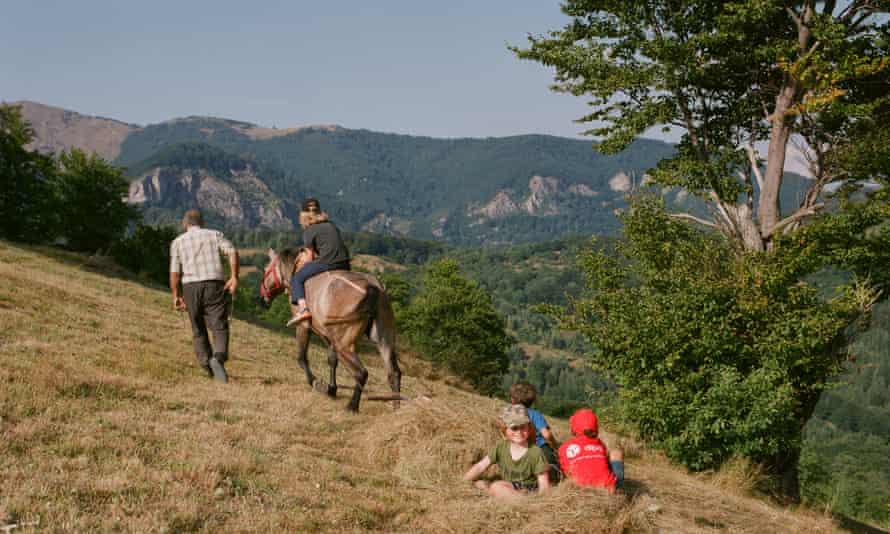
I heard about Dobraia – a new glampsite high in the wild Cerna mountains – thanks to Romania Private Tours. The remote camp inside the Domogled-Valea-Cernei national park, in Romania’s little-visited Banat region, is not easy to reach: it’s a seven-hour drive from Bucharest, and then a steep two-hour hike (a rough track reaches the spot, but you need an off-road vehicle). Yet it’s worth every step when you finally see four white bell tents (each costing about £35 a night) gazing at limitless mountains.
All meals are homecooked by the self-sufficient owners, the Raduta family – every ingredient is organically grown or produced by them. I went in August with my husband and two young children, who loved helping bring the cows home from foraging in the forests, then milking them by hand; and we swayed in hammocks under plum trees, picnicked in orchards and walked to isolated hamlets strung among the peaks. It’s so bucolic I half expected the Greek god Pan to appear with his flute.
Kate Eshelby
The best of the Pennine Way
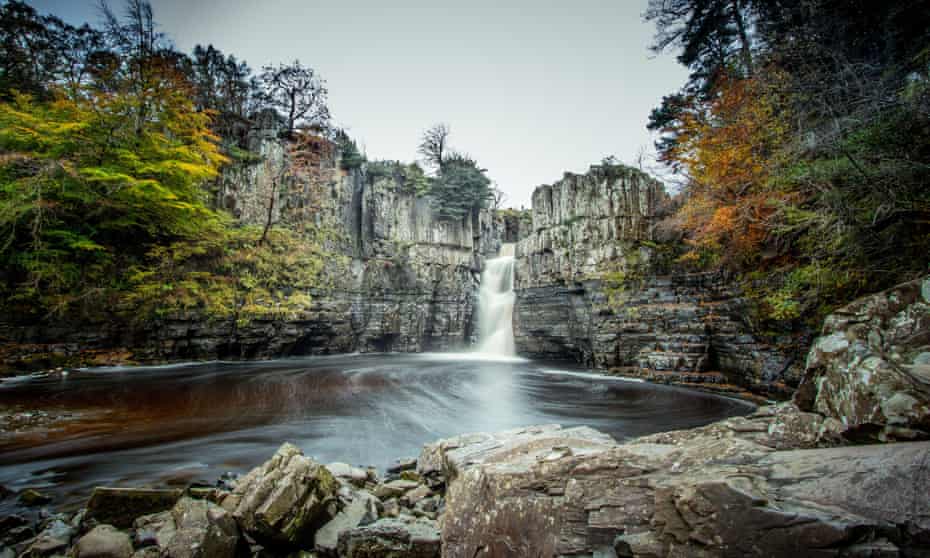
Some of the Pennine Way can be miserable. Days are spent trudging across desolate moors. Even when it’s dry, secret bogs lie beneath, hungry for tired legs. Cottongrass is the only thing able to stomach the acid below and gloom above. But there’s ancient majesty in those 268 miles. West of Middleton in Teesdale, the path runs along the river and the shrubs thicken with juniper, a relic of the end of the ice age. Soon, the water gathers pace and becomes High Force, a 22-metre waterfall that plunges over a shelf of dolerite formed 295 million years ago. Two hours west and the skies widen as the river yawns around Cronkley Scar. The grass flows in the breeze, tickling the tummies of the Belted Galloways from Widdybank Farm. Above, curlews and lapwings soar with delight. When I was there, the sun perched above Cauldron Snout. It seemed to wait for hours, as if loath to turn its back on the beauty below.
James Gingell
The only way is Essex churches
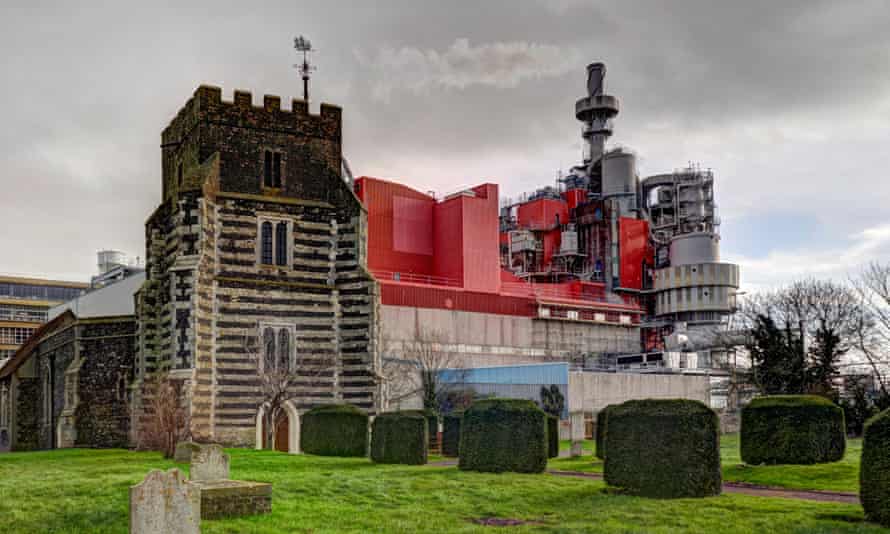
It began, like all the best travel discoveries, by chance. I was in Brightlingsea on the Essex coast when someone recommended All Saints Church. There I discovered a dado trail of 211 large square tiles girdling the interior, each recalling a local sailor lost at sea. Starting in 1872 with a father and son drowned off Hartlepool, it continues through terrible winters, giving a few details: Samuel Bridges, for example, was “washed overboard from the Mary Anne of Aberystwith 15 miles north of Bishop Light”. There was even a local man on the Titanic: steward Sidney Siebert, who leaped overboard but died in the lifeboat.
Essex churches repay your dedication. Too many are locked, or open rarely, but be persistent: St Clements in West Thurrock, is a flinty-faced 12th-century chapel overshadowed by a soap factory , a visual oxymoron and magnet for film scouts (remember the funeral part of Four Weddings?). Walk down the Thames from Purfleet station past a feast of graffiti art and industrial architecture.
Kevin Rushby
Going Gothic on Germany’s Baltic coast
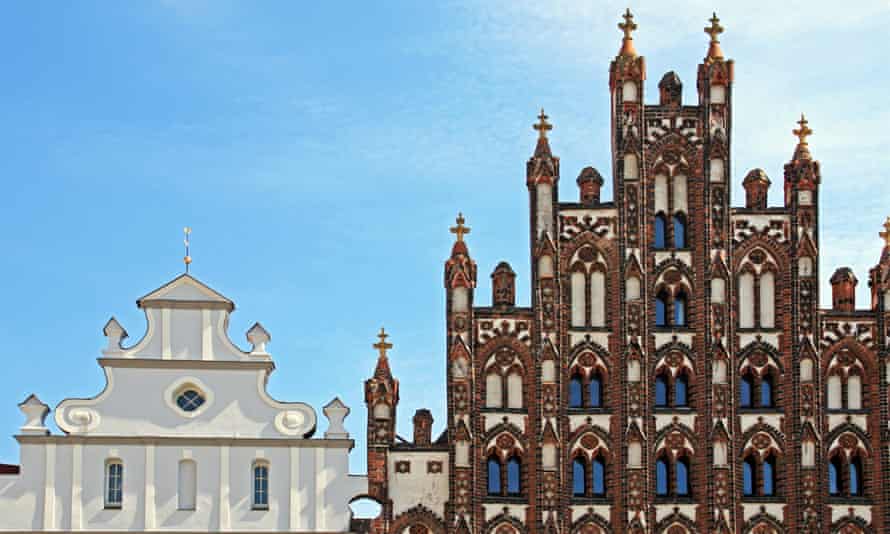
Flanked by the Baltic Sea with its lively harbour dipping into the Ryck River, I spent two days in the Western Pomeranian city of Greifswald during a blisteringly cold October break. It was the first time I had visited the beautiful Hanseatic city, 50 miles from the Polish border. Around every corner was yet another magnificent piece of architecture with an equally impressive history – from its St Nikolai cathedral, peeping above its central square, to the former Cistercian monastery, Eldena Abbey, on the outskirts. Stood in the centre of its marktplatz you are cocooned within renovated Gothic-style buildings in shades of crimson, sunshine yellow and dusky pinks. These buildings were immortalised in the paintings of its most famous son, the Romantic period artist Caspar David Friedrich. There is an exceptionally lively bar scene due to the city’s 15th-century university and a chance to go on a boat trip to the nearby charming town of Wieck with its traditional salted fish restaurants.
Nazia Parveen
Surprising safaris on the Isle of Wight

Funnelling into the thick canopy of trees at dusk, I felt as though someone suddenly turned out the lights. “Can you see anything?” I whispered to my guide Dave Fairlamb, as my eyes strained, hoping to make out the shape of an elusive and endangered creature. “Not yet,” he replied as we continued to feel our way along the footpath on our nocturnal safari.
When it comes to observing and photographing wildlife in its natural habitat – particularly in Britain – my brain automatically wanders north, picturing deer and pine marten in Scotland’s Cairngorms, seal pups on the Isle of Mull, or puffins on the cliffs of Northumberland’s Farne Islands. Yet 2021 was the year I discovered that we have a really wild isle further south – the Isle of Wight.
I visited this summer to spy sea eagles at Brading Marsh, red squirrels in Borthwood Copse, wall lizards at Ventnor, stingray at Thorness Bay and, guided only by the light from the moon, elusive dormice in Alverstone. And though some of my safari was spent in the dark, I felt like a light had been shone on the wilder side of this Victorian beachside favourite.
Phoebe Smith
A monster trip to Loch Ness
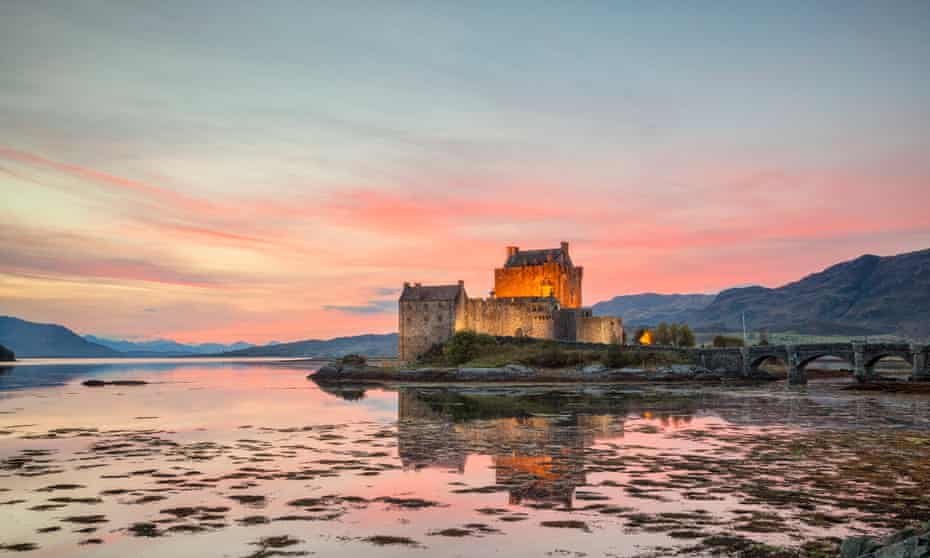
While there are beautiful parks near us, we do live in the middle of a concrete jungle in east London and I often dream of being in the wilderness. So, in October, in celebration of our third wedding anniversary, we got on a train to Inverness. The eight-hour train journey was one of my favourite parts of the holiday. I loved seeing the distance I was putting between myself and the place I had felt so stuck in for so long and finally having the time to read.
We spent a few days driving across different areas of the Highlands, from Loch Ness to the Isle of Skye. In Inverness, I loved visiting Leakey’s secondhand bookshop, and the Culloden Battlefield. The boat ride in Loch Ness is unmissable – even on a rainy October day – as is the wonderful walk we went on in Kinloch Forest and the castle, Eilean Donan. I particularly loved how small I felt driving around the North Coast 500 route. It was an important reminder that after more than a year of feeling my world close inwards, there are so many things much bigger than me.
Aamna Mohdin
Pigs trotters with prawns in the Pyrenees
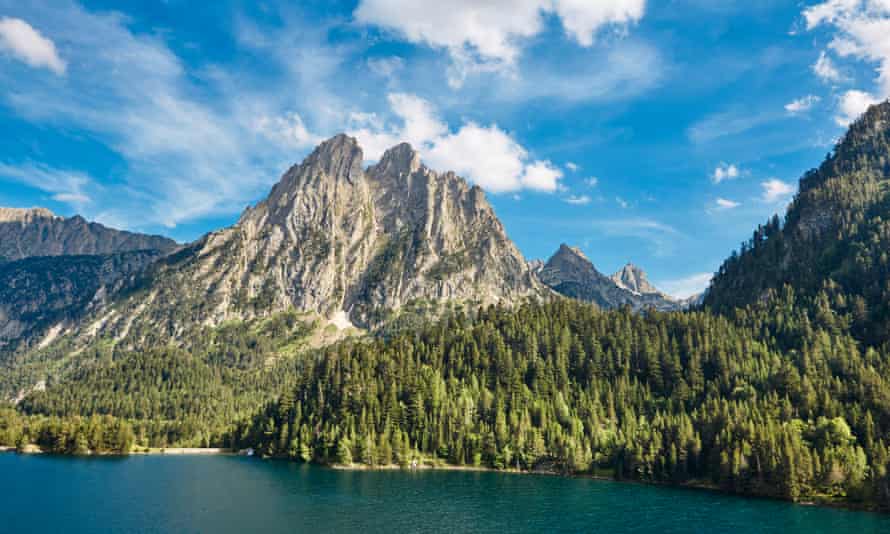
With Spain under partial lockdown for much of the year, and inter-regional travel off the cards, living here I found it a great relief to have the varied landscapes of Catalonia close to hand: its ragged coastline of long, sandy beaches and hidden bays; the rice paddies of the delta to the south; the crystal-clear mountain lakes and fragrant pine forests to the north. Up here near the border with France, on the roads that wind through the foothills of the Pyrenees, is where you’re most likely to stumble across one of Catalonia’s greatest charms – the random apparition of the sort of restaurant city-dwellers can only dream of. Thick stone walls, garden tables dappled with shade, and a blackboard trumpeting the sticky chargrilled soul food that should always round off a day’s hiking. And so it was with Restaurant Girul, just outside the village of Meranges.
Oxtail stew, pigs’ trotters with prawn, and doormat-sized T-bone steaks share the billing with trinxat (a Catalan take on bubble and squeak) and a tray of snails just as they should be: not bland, not rubbery, just the right amount of garlic. Three courses and a bottle of decent local red brought the bill for two to €70.
Sally Davies
Following Hippocrates into Greece’s therapeutic springs
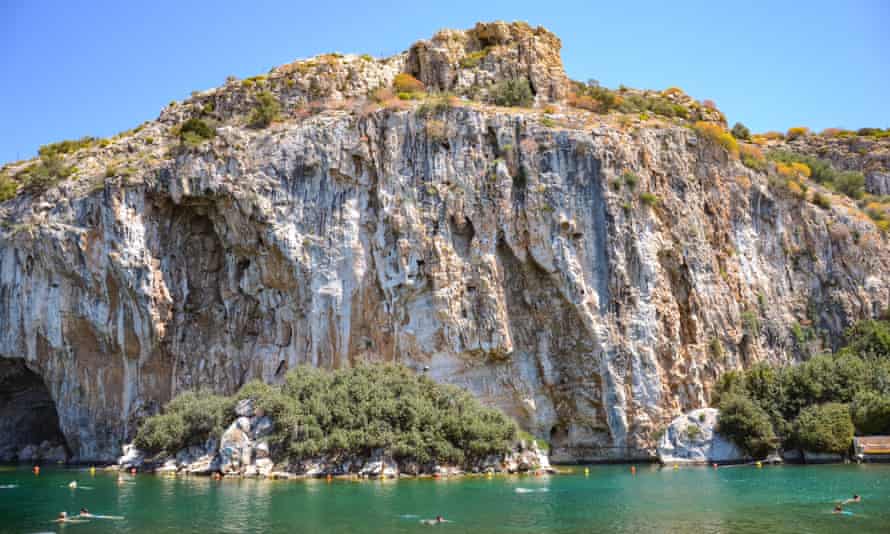
As someone who starts shivering as soon as the mercury sinks below 15C, I’m a firm fan of Greece’s hot springs, which surge out of the ground at blood-warming temperatures.
Said to cure everything from eczema to arthritis, they’ve been popular since antiquity: celebrated physician Hippocrates was convinced of the therapeutic properties of thermal water and fifth-century BC historian Herodotus was also a huge fan of balneotherapy, appropriately enough in a country where legend has it that baby Achilles became (almost) invincible after his mother dipped him in the Styx’s spring-fed waters.
I discovered the hot spring lake of Vouliagmeni while exploring the Athenian riviera, 30 miles of beach- and tavern-fringed coastline stretching from the chic suburbs of Palaio Faliro to Poseidon’s temple at Cape Sounion. Surrounded by pine forests, the lake is actually a sunken cave fed by thermal springs that bubble up at about 21C. Wallowing in the (slightly stinky) sulphur-rich waters where Greeks have bathed away their aches and pains for 2,500 years was a legendary experience. A day pass is €15-18 and under-fives go free.
Heidi Fuller-Love
The Clarion call of Britain’s last socialist refuge
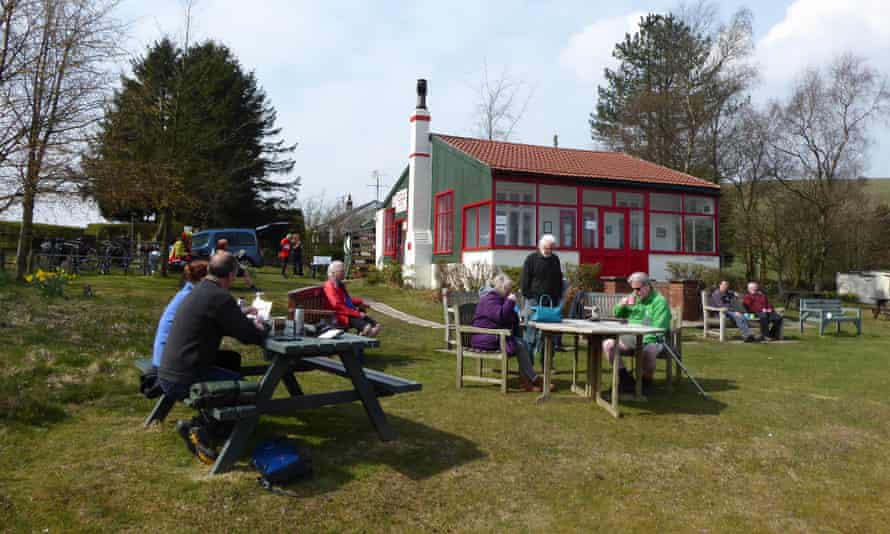
I came across Clarion House by chance, driving home from Roughlee, in Lancashire. There, by the roadside, was a pretty, single-storey red-and-white building, with a simple trumpet for its logo. It was built in 1912 for mill and factory workers who came up into the countryside around Pendle Hill to escape the grime and noise of increasingly congested towns such as Colne and Brierfield. Inside are posters from the Spanish civil war, a beautiful piece of stained glass and a banner emblazoned with “Workers of the world unite”. Soft sunlight streams in through the windows. Long benches are laid out for chatting over a cup of tea and the Communist Manifesto. During the late 19th and early 20th centuries, Clarion Houses popped up in several rural areas – many linked to cycling clubs – including Halewood in Merseyside and Sheldon in Birmingham. Sadly, the Clarion House I “discovered” in 2021 is the only one still standing. In my dream future, there are Clarion Houses dotted all over the regreened, rewilded UK, serving as waystations and watering holes on “slow ways” that join up all our hamlets and villages, towns and cities. That’s my clarion call for today.
Chris Moss
Drinking in the atmosphere of Valletta’s back streets
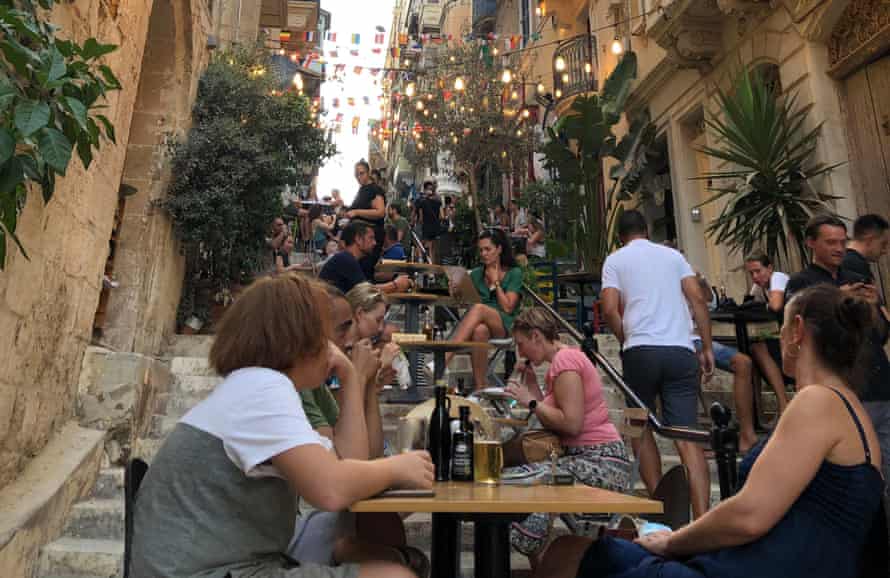
Like most of my favourite places around the world, this one was uncovered by accident. Dropped off at the wrong address down a backstreet in the Maltese capital, I scanned the warm limestone walls, balconied and shuttered, and wondered which housed our restaurant. Early for our seating, we climbed a set of steps expecting an empty alley and looked up at what appeared to be a makeshift restaurant cascading towards us. Tables and bright wooden chairs wobbled on the slabs, couples sipped cocktails and shared deep-fried duck rolls and steaming pizza. Waiting staff appeared from wooden shutters in the walls and strings of golden bulbs zigzagged from one side of the street to another. Warm, inviting, quiet enough to chat, noisy enough to blend in, Saint Lucia Street was the perfect spot for a pre-dinner drink, bare shoulders and flip-flopped feet still warm in the salty coastal air.
Monisha Rajesh
Riverside hike near Belfast

In May, I spent a week exploring the wild green spaces around Belfast: the basalt cliffs of Cave Hill, heather-covered Black Mountain, the glens of Antrim and the wooded beaches of North Down. One revelation for me, even in the rain, was the popular 11-mile towpath beside the River Lagan to the neighbouring city of Lisburn, with trains back to Belfast. Walking upstream from the ceramic big fish sculpture, celebrating the river’s 1999 regeneration, I detoured through the clematis-covered arches and 1840s palm house of Belfast’s Botanic Garden. Cows were grazing the flowery Lagan meadows, two miles further on, and a lock-keeper’s cottage stood under pink-and-white apple blossom. My favourite stretch was Minnowburn with its mossy waterside beeches, winding waterways, and van selling tea and cake. There were clouds of cow parsley, clumps of yellow kingcups, herons in the willows, and a swan nesting right by the path.
Phoebe Taplin
The industrial landscapes of Luxembourg
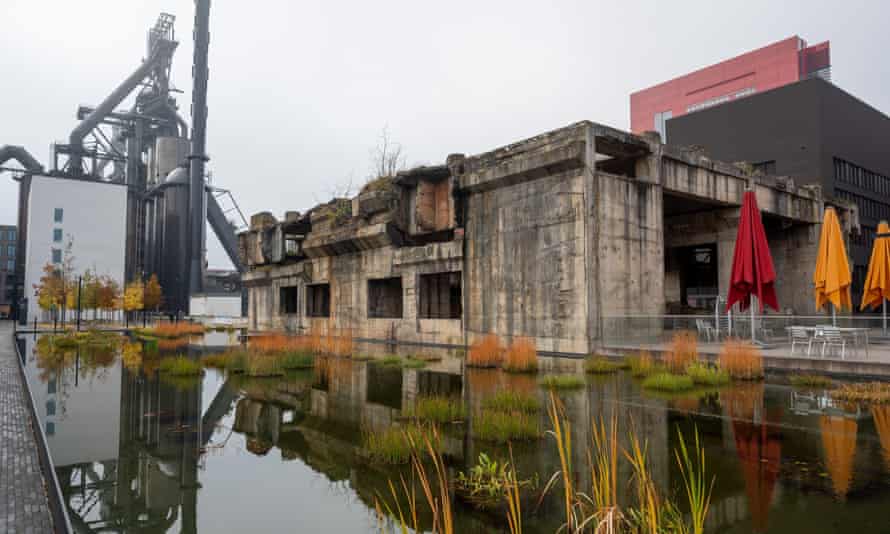
It was an interest in migrants from Cape Verde that took me to the south of Luxembourg. Most visitors to the Grand Duchy make first for the capital and then, if they go anywhere else at all, venture into the hilly Ardennes region in the north. But the former industrial landscapes that nudge up towards the French border are real hidden Europe territory. This southern fringe of Luxembourg is wou dat roud Gold gegruewe gou – Luxembourgish for “where the red gold was dug”. The red gold was iron ore. The foundries and smelters in the Alzette Valley are long gone, and the region around Esch is now the hub of one of Europe’s most-ambitious programmes of regeneration and urban renewal.
There’s real visual drama in these erstwhile industrial areas and I fancy we’ll be hearing a lot more about this region in 2022 as Esch-sur-Alzette steps into the limelight as a European Capital of Culture.
Nicky Gardiner




